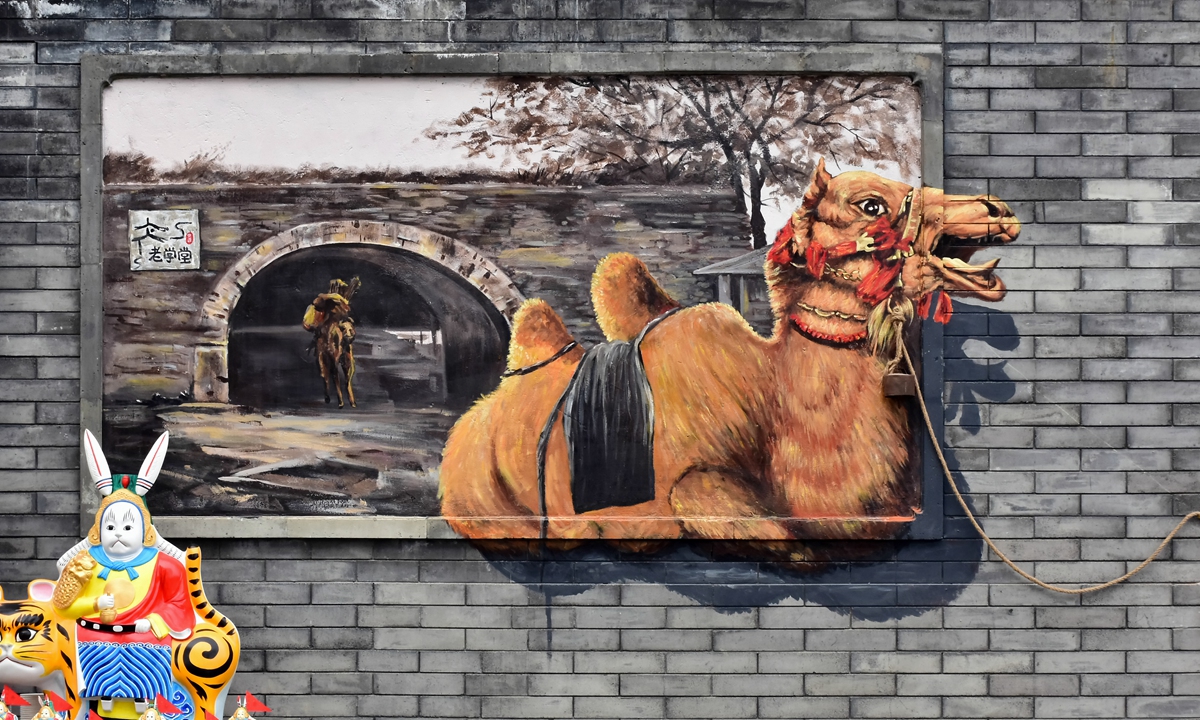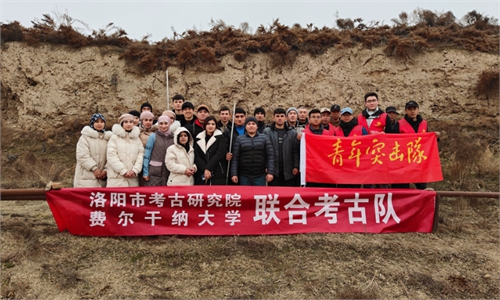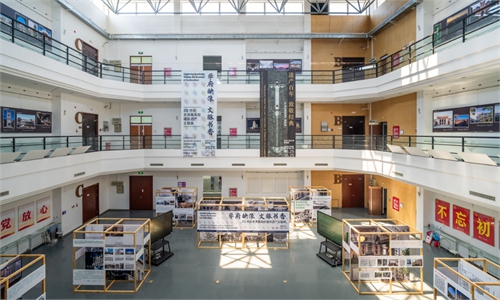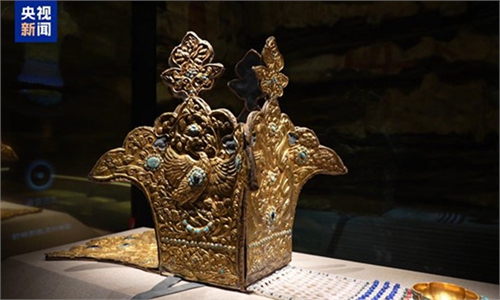ARTS / CULTURE & LEISURE
Preserving heritage via innovation, reviving Jingxi ancient road in Beijing
Hoofprints of the time

A mural on a wall in Moshikou block in Beijing Photo: VCG
Desolate and foul-smelling, with few young people and many underdeveloped commercial facilities - these are the first impressions of the Moshikou block, in the Shijingshan district on the outskirts of Beijing, to Zhang Hao, manager of the planning and design department at the Moshikou renovation division.As a historically significant part of the Jingxi Ancient Road, Moshikou, also known as the "Ancient Road of Camel Bells," was once a bustling trade route leading to Beijing in history. Recent renovations have transformed it into the "Moshikou Historical and Cultural Block."
In March, Moshikou was selected as a national-level tourism and leisure block by the Ministry of Culture and Tourism. Data shows that in 2024, the block received over 6 million visitors in total.
Zhang told the Global Times that by making small-scale renovations rather than large-scale demolition and reconstruction, Moshikou was revitalized through the use of the existing terrain and cultural heritage of the Jingxi Ancient Road. By adding leisure spaces for visitors and scenic spots for photography, modern design elements were integrated into traditional cultural features, breathing new life into the historical site.
In May, a meeting on the exploration of cultural heritage along the Jingxi Ancient Road was held in Hebei Province. The meeting emphasized the importance of preserving the historical legacy of the ancient path and leveraging its cultural resources to develop projects such as hiking tours and historical experience tours, aiming to revitalize the ancient path with new vitality in the new era.
Wang Chunhe, president of the Beijing Jingxi Ancient Road cultural development association, told the Global Times that the historical and cultural heritage of the Jingxi Ancient Road must be preserved through active utilization and developed through continuous innovation.
The road is an important symbol and historical witness of ancient civilization across the region, Wang said.
Improving locals' livelihood
Contrary to common belief, the Jingxi Ancient Road is not a single route, but a network of multiple interconnected routes with functions of ethnic integration, military defense, commercial trade and logistics, religious activities, and urban supply.
It was a transit artery dating back to the Han Dynasty (206BC-AD220), leading to with the western mountainous regions and areas beyond the Great Wall. It once played a vital role in promoting ethnic integration, social interaction, and cultural exchange across different regions and historical periods. It made a significant contribution to the formation and development of the city of Beijing, Wang said.
The ancient path's cultural appeal lies primarily in its abundant humanistic heritage, its profound historical and cultural surroundings, its intangible cultural heritage, and the deep sense of experience and emotional resonance it evokes, he noted.
Intent on preserving cultural heritage while improving the well-being of local residents, leisure spaces, bookstores, and art installations have been established, blending historical charm with modern attractions, Nie Ying, a publicity officer with the Moshikou block, told the Global Times.
A previously protected courtyard that was not open to the public was transformed into a public exhibition hall that tells the story of how Moshikou village became the first village in Beijing to gain access to electricity in the 1920s, according to Nie.
Zhang noted that the renovation of Moshikou is still ongoing. "Next, we will keep taking into account the needs of local residents, business owners, and tourists, integrating livelihood support with cultural and commercial functions to preserve nostalgic memories while promoting distinctive development.
'Cloud villager'
Currently, there are 38 preserved sections of the Jingxi Ancient Road in Beijing's Mentougou district, with a total length of approximately 684 kilometers.
Due to the constant flow of mule and donkey caravans transporting goods such as coal, salt, furs, and tea to Beijing in history, the iron hooves of these animals left behind numerous hoof prints of varying depths on the stone surface, with some visible today being over 10 centimeters deep. Today, these hoof marks stand as powerful evidence of the ancient road's prosperity.
A total of 352 hoof prints were left on the section of the Jingxi Ancient Road that runs through Shuiyuzui village in Mentougou.
To better preserve and promote the cultural heritage of the ancient road, the village launched a mini program on WeChat called "Jingxi Shuiyuzui Cloud Villager." Through it, the public can become virtual "villagers," explore the ancient road online, visit virtual exhibitions, and even "adopt" hoof prints digitally.
Chen Chuang, the village's Party secretary, told the Global Times that the mini-program is available in over a dozen languages, attracting virtual villagers from overseas as well. By performing virtual tasks like weeding and draining water, virtual villagers can level up their status and enjoy perks such as discounted tickets and support for entrepreneurial projects offline in the village, Chen said.
"Top-level users of the mini program will become our honorary villagers, entitled to free lifetime access to the scenic area of our village. They will also be able to participate in local entrepreneurship projects. We hope more young people will come to start businesses and settle in the village, bringing new vitality to our community," Chen noted.
As Wang said, the historical and cultural legacy of the Jingxi Ancient Road must be preserved through active utilization and developed through continuous innovation. Its true significance lies in the ongoing discovery, interpretation, and shaping of its relevance in the present era.



